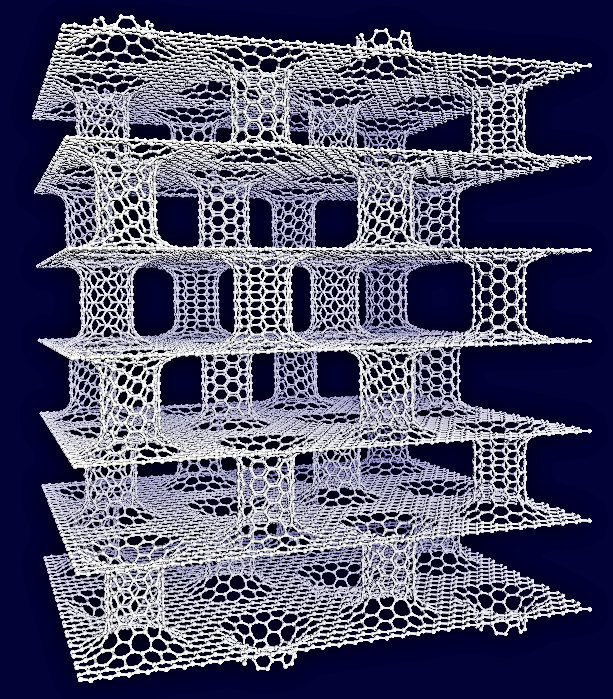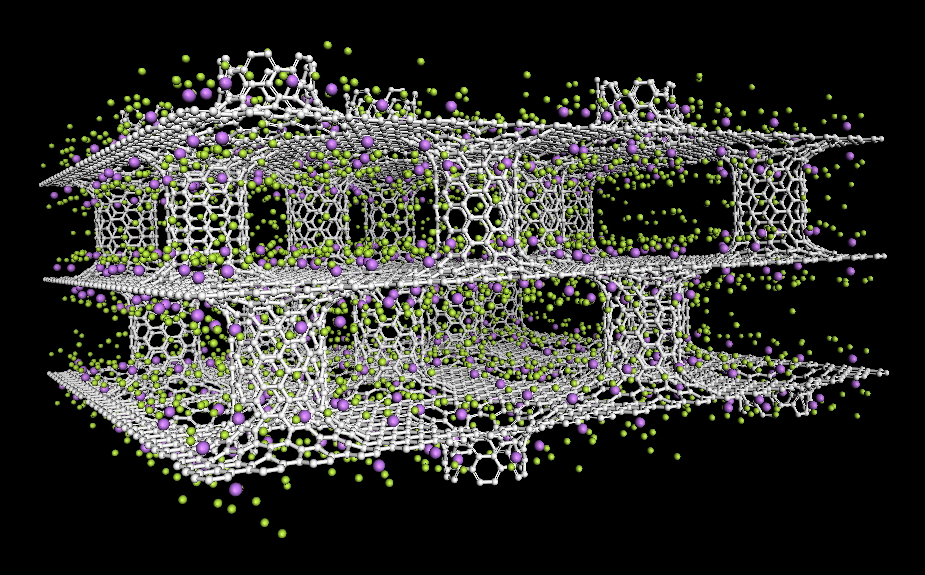Hydrogen Storage in Carbon Based Materials

Carbon Based Materials are considered ideal candidates for hydrogen storage due to their light weight and structural stability. However, existing carbon materials, like Carbon Nanotubes (CNTs), do not satisfy H2 storage capacity targets.
Existing H2 storage technologies (metal hydrides, cryogenic conditions and high pressure tanks) are inefficient for automobile applications, for a variety of reasons. A radical solution to the hydrogen storage problem would be the design of new, tailor–made, compact, light nanomaterials that can sorb H2 at ambient conditions.
Having in mind carbon's superior structural stability, low–weight and ease of processing, we aimed to design a carbon–based material with tunable pores and high gravimetric and volumetric H2 storage capacity. The objective was fulfilled by combining two carbon allotropes, Graphene sheets and CNTs, to construct an entirely novel material, Pillared Graphene. In this architecture, we can tune the pores at will, thus making the material ideal for several applications including hydrogen storage.
By doping Pillared Graphene with alkali cations, we predicted that the hydrogen storage capacity of the material is enhanced. At room temperature and low pressures, required for most applications, the material satisfies the DOE's technical targets for hydrogen storage.


